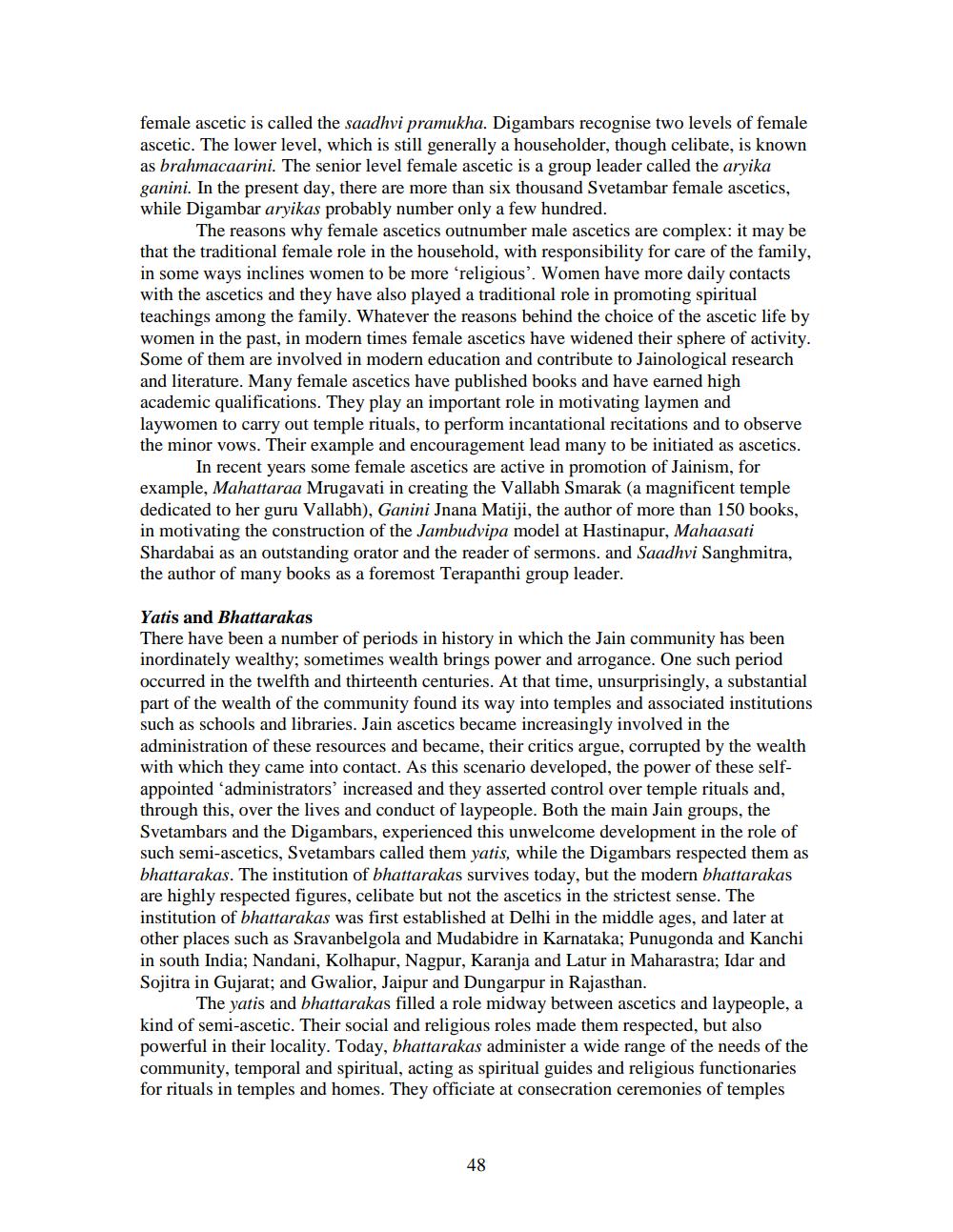________________
female ascetic is called the saadhvi pramukha. Digambars recognise two levels of female ascetic. The lower level, which is still generally a householder, though celibate, is known as brahmacaarini. The senior level female ascetic is a group leader called the aryika ganini. In the present day, there are more than six thousand Svetambar female ascetics, while Digambar aryikas probably number only a few hundred.
The reasons why female ascetics outnumber male ascetics are complex: it may be that the traditional female role in the household, with responsibility for care of the family, in some ways inclines women to be more 'religious'. Women have more daily contacts with the ascetics and they have also played a traditional role in promoting spiritual teachings among the family. Whatever the reasons behind the choice of the ascetic life by women in the past, in modern times female ascetics have widened their sphere of activity. Some of them are involved in modern education and contribute to Jainological research and literature. Many female ascetics have published books and have earned high academic qualifications. They play an important role in motivating laymen and laywomen to carry out temple rituals, to perform incantational recitations and to observe the minor vows. Their example and encouragement lead many to be initiated as ascetics. In recent years some female ascetics are active in promotion of Jainism, for example, Mahattaraa Mrugavati in creating the Vallabh Smarak (a magnificent temple dedicated to her guru Vallabh), Ganini Jnana Matiji, the author of more than 150 books, in motivating the construction of the Jambudvipa model at Hastinapur, Mahaasati Shardabai as an outstanding orator and the reader of sermons. and Saadhvi Sanghmitra, the author of many books as a foremost Terapanthi group leader.
Yatis and Bhattarakas
There have been a number of periods in history in which the Jain community has been inordinately wealthy; sometimes wealth brings power and arrogance. One such period occurred in the twelfth and thirteenth centuries. At that time, unsurprisingly, a substantial part of the wealth of the community found its way into temples and associated institutions such as schools and libraries. Jain ascetics became increasingly involved in the administration of these resources and became, their critics argue, corrupted by the wealth with which they came into contact. As this scenario developed, the power of these selfappointed 'administrators' increased and they asserted control over temple rituals and, through this, over the lives and conduct of laypeople. Both the main Jain groups, the Svetambars and the Digambars, experienced this unwelcome development in the role of such semi-ascetics, Svetambars called them yatis, while the Digambars respected them as bhattarakas. The institution of bhattarakas survives today, but the modern bhattarakas are highly respected figures, celibate but not the ascetics in the strictest sense. The institution of bhattarakas was first established at Delhi in the middle ages, and later at other places such as Sravanbelgola and Mudabidre in Karnataka; Punugonda and Kanchi in south India; Nandani, Kolhapur, Nagpur, Karanja and Latur in Maharastra; Idar and Sojitra in Gujarat; and Gwalior, Jaipur and Dungarpur in Rajasthan.
The yatis and bhattarakas filled a role midway between ascetics and laypeople, a kind of semi-ascetic. Their social and religious roles made them respected, but also powerful in their locality. Today, bhattarakas administer a wide range of the needs of the community, temporal and spiritual, acting as spiritual guides and religious functionaries for rituals in temples and homes. They officiate at consecration ceremonies of temples
48




